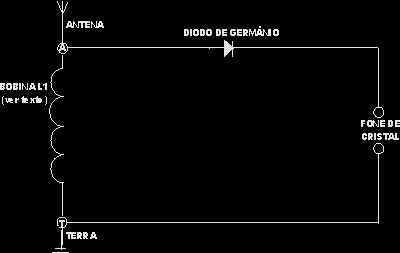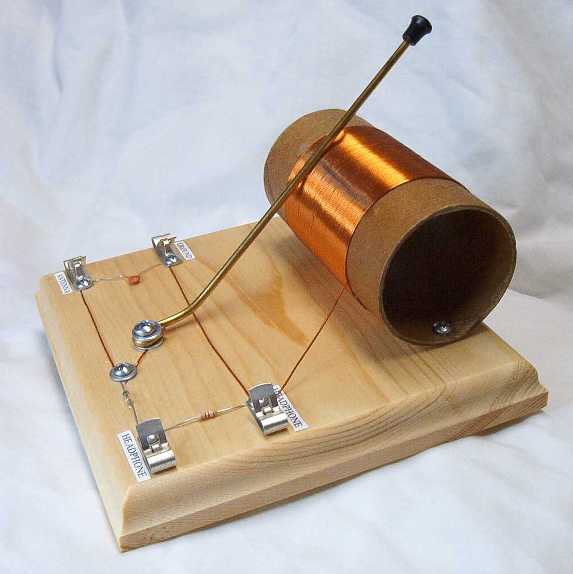
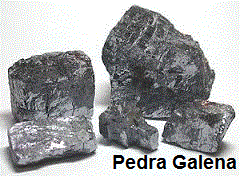
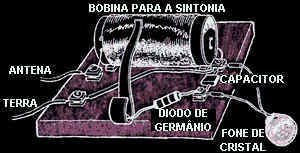
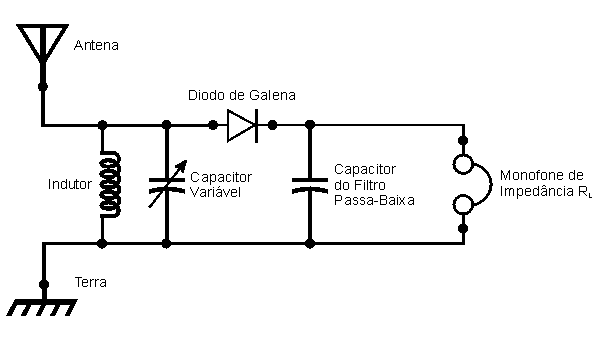
|
|
O Germanium diode can be easily found in most consumer electronics stores. |
The galena stone is a natural oxide of lead in crystal form which
has semiconducting property (and this property is fundamental to
detect radio waves). We met the (and still today with any luck can
be found) in the Serra do Curral in Belo Horizonte. In modernity of
our times, with technological advances, we can replace it with the
germanium diode. The radio galena (as it is called) is a simple AM
receiver that can be built by anyone, as it needs no further
knowledge of electronics. Uses the semiconducting properties of
galena stone that was one of the first semiconductors used even
before the germanium and silicon. For its proper functioning is
necessary an antenna of approximately 10 m wire. The galena radio
requires no power supply because all the energy is captured by the
antenna.
.gif)
